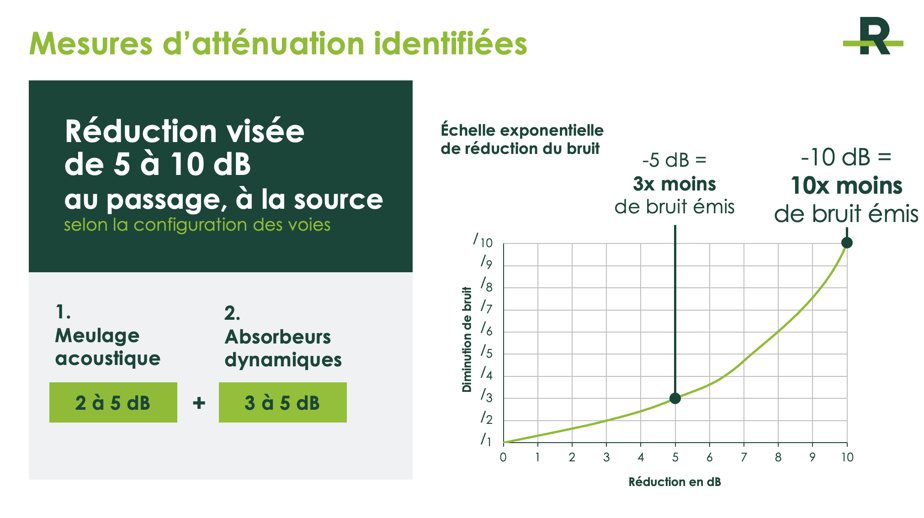
CDPQ Infra admits that noise from the Réseau Express Métropolitain (REM) between L’Île-des-Sœurs and Central Station is “not satisfactory”. Acoustic grounding will be carried out on the rails by November and dynamic absorbers will be added by December, which should reduce noise “3 to 10 times”. But the company, which ruled out the addition of new noise walls, warned that the work would affect evening and night services.
“For us, it is fundamental to do it as soon as possible,” Jean-Marc Arbaud, president and CEO of the Caisse de Dépot subsidiary, insisted at a press conference on Monday.
REM should be closed “a little early” in the coming weeks to speed up implementation of the measures, he conceded. The work will be carried out for five days a week in the evening and at night for a month and a half. “That means stopping the service by notifying customers and putting backup plans in place at 10pm to have more slots,” Mr Arboud said.

Photo by Robert Skinner, Law Press Archives
Jean-Marc Arbaud
In a study made public this Monday, CDPQ Infra says grounding will be carried out “in the entire section between L’Île-des-Sœurs and the central station” by mid-November. Dynamic absorbers, however, are only “on significant portions of the path near the home.” They will be installed “gradually” from mid-October to December.
Both of these measures should produce a reduction in sound intensity of 5 to 10 decibels. Grounding absorbs 2 to 5 decibels, absorbers 3 to 5.
According to CDPQ infra, such a reduction equates to “a 3- to 10-fold reduction in emitted noise levels compared to the current situation.” That’s because the relationship between the number of decibels and perceived noise is exponential, the organization points out. In other words, one decibel has a big effect.

Courtesy CDPQ INFRA
No other noise barriers
However, no new noise barrier is planned for now. The REM team said it had studied this possibility, but “given the height configuration of the built environment, it is generally assumed that this measure would not lead to any significant acoustic gains”. Mr. Arbaud however stated in July, In an interview with PressIn addition to additional noise barriers.
“The system is very high, but the noise barriers are limited in height. Usually, they are 2.5 meters and the rolling noise spreads very high,” CDPQ Infra Vice President of Public Affairs Philippe Batani provided by way of justification.
In short, “walls have little or no effect in limiting the propagation of sound. This option is ruled out for now as we aim to reduce noise at the source,” he asserted.
At Action-Guardian, a group that has rallied in recent months to demand action against noise from REM, spokesman Simon Paquette spoke of the “interesting” moves on Monday. “For us, 5 to 10 decibels is noticeable and we still think they should fix the problem quickly,” managing Mr. Paquette.
However, his team had difficulty understanding why “a dynamic absorber is not planned in the hollow of the curve” of Point-Saint-Charles. “They justify it by saying that there are no residences, but it makes a lot of noise around the curve. After December, we will have to monitor whether other measures are necessary, such as reducing the speed of the train. »
Less than “10” million
Mr. According to Arboud, already requested noise-related mitigation measures in Saint-Laurent and Côte-des-Neiges, where the REM arrives by the end of 2024, “are not a budgetary issue”. “We’re talking about a few million, less than 10,” he explained. Mr Arboud said it was “hard to imagine” that noise would become such a problem in neighboring areas.
Seven sound level meters have been used in recent months to analyze ambient noise in Smith, Ollier, du Seminar, Saint-Madeleine and Mullins streets, as well as Ash avenue and Chemin du Golf.
In Rue Olier, CDPQ infra notes, for example, that noise increased from about 55 to 60 decibels with REM. On the way to golf, it surpassed the 70 decibel mark. And on Sainte-Madeleine Street, it was about 55 decibels.
However, steps were taken Press A sound level meter this summer showed that the noise generated by the REM regularly exceeded 70 decibels at Pointe-St-Charles, sometimes exceeding the 75 mark. The situation then concerns Montreal public health, but also a good number of local residents.
A number of civic meetings have been planned in the respective neighborhoods from Tuesday to Thursday to provide a detailed analysis report on the noise problem.
- September 26: Pointe-Saint-Charles (at Saint-Charles Church)
- September 27: Griffintown (at Plaza Center-Ville)
- September 28: Nuns’ Island (at the Elgar Centre)





